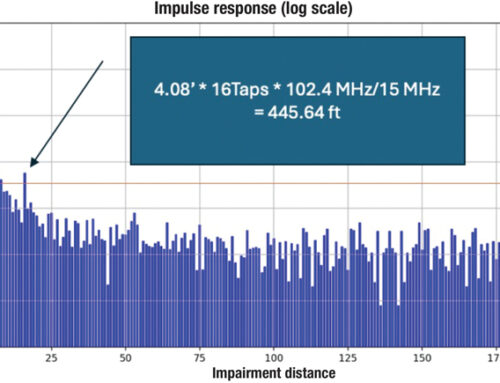GETTING PROACTIVE ABOUT NETWORK MAINTENANCE
Proactive network maintenance (PNM) is more abstract than reacting to a crisis, and therefore, cable operators must have operational practices in place to ensure that once PNM tools are purchased they are used successfully, their benefits are tracked, and the organization is achieving the expected ROI.
“Cable operators have been reactive since day one,” said Brady Volpe, president and founder of the Volpe Firm. “They know how to fight fires very well. What they want is for the fires not to start. If they see a glowing, they want to make sure it is extinguished before the flame ignites.”
Businesses need to have an organizational buy-in to PNM, which means making sure it is understood by not only the people using it, but also throughout other divisions, such as the IT department responsible for the backend and the CFO in charge of budgetary things. Two key metrics are truck rolls and CSR calls, both of which can demonstrate success, and also be used to develop PNM training programs and encourage continued investment in these programs, Volpe said.
Using numbers from Cox Communications, Volpe said the average truck roll might cost $75.00 and the average CSR call is around $8 per call. Volpe’s clients that use PNM for six months to a year find a 10% reduction in truck rolls and a 15% reduction in CSR calls. If an operator has 50,000 truck rolls and 350,000 CSR calls per year, the annualized cost avoidance could be just under $800,000 per year.
“(An operator) can use this as a model if they don’t have PNM to (determine), ‘These are the savings or costs I can avoid if I use PNM.’ If an operator is currently using PNM, they might say, ‘Wow, we should be doing this type of metric tracking to make sure we can ensure continual funding,'” Volpe said.
Volpe suggests identifying PNM champions, who are individuals or teams within an organization, responsible for understanding the core technology application, and might use PNM tools once a day or a few times per week. These folks find opportunities for proactive maintenance, perhaps while out fighting the so-called fires.
“If you have a PNM champion, they would say, ‘I know that down on 5th and Main there is an outage, but there also are modems in the area that PNM applications have identified as having possible issues.’ They are not offline, customers are not complaining, but cable plants don’t get better over time,” Volpe said.
for more of the article please go to BTR
November 11, 2015
By Monta Monaco Hernon BTR
Another best practice is to develop an impairment library. PNM tools might show impairments that were not seen with test and measurement devices. As technicians learn to identify new impairments in ways they have never been able to see them before, they can categorize them and save them in the library to teach others. If they see what a piece of corrupted coax looks like from a PNM standpoint, for example, technicians can rely on this data to identify it better in the future, Volpe said.
DOCSIS 3.1 brings many new capabilities to the PNM arena by way the CMTS and cable modems. Volpe recommends operators invest in DOCSIS 3.1 CMTS even if they are not running it in OFDM mode. Through software upgrades in the PNM server, the new features can be utilized. For example, using a DOCSIS 3.1 CMTS and cable modem, the return path can be swept 24/7.
“A technician doesn’t need to go out in the field. (The operator) can do it in the background. This is more cost savings,” Volpe said.





Leave a Reply